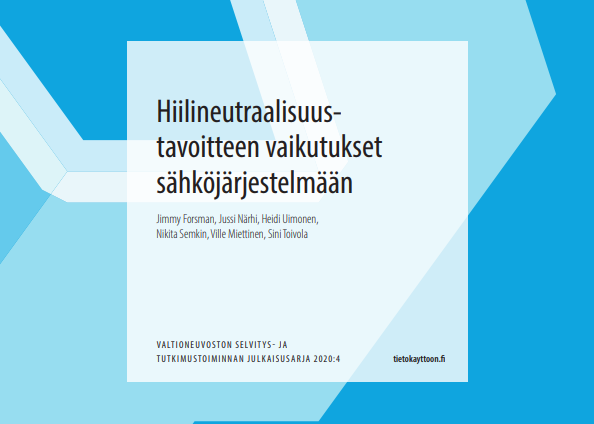VNK study: Finnish decarbonisation scenarios
This study was carried out using the BID3 model to examine how a future zero carbon 2035 scenario may look like for Finland
The government of Prime Minister Sanna Marini has set an ambitious goal for Finland to be carbon neutral by 2035. In order to achieve carbon neutrality, various sectors have drawn up low-carbon roadmaps, which show that the need for electricity will increase significantly in key industrial sectors in Finland, and also in other sectors such as transport and heating.
This study assesses the effects of the carbon neutrality target on Finland's electricity system and security of supply as electricity consumption increases and renewable electricity production fluctuates. In this study, the effects of electrification have been described and assessed using three scenarios: a basic career and two electrification scenarios, a basic electrification scenario and an intelligent electrification scenario. The baseline scenario serves as a reference point compared to the two electrification scenarios.
In two electrification scenarios, the demand for electricity will increase significantly with the significant electrification of industry and other sectors. The two electrification scenarios differ mainly in the development of electricity consumption flexibility and the development of nuclear and wind power capacity in the 2030s. In 2035, the real average price of electricity will remain below EUR 40 / MWh in the baseline scenario, when it will rise closer to EUR 50 / MWh in the electrification scenarios. Consumption flexibility plays a key role in both electrification scenarios, especially in smart electricity



